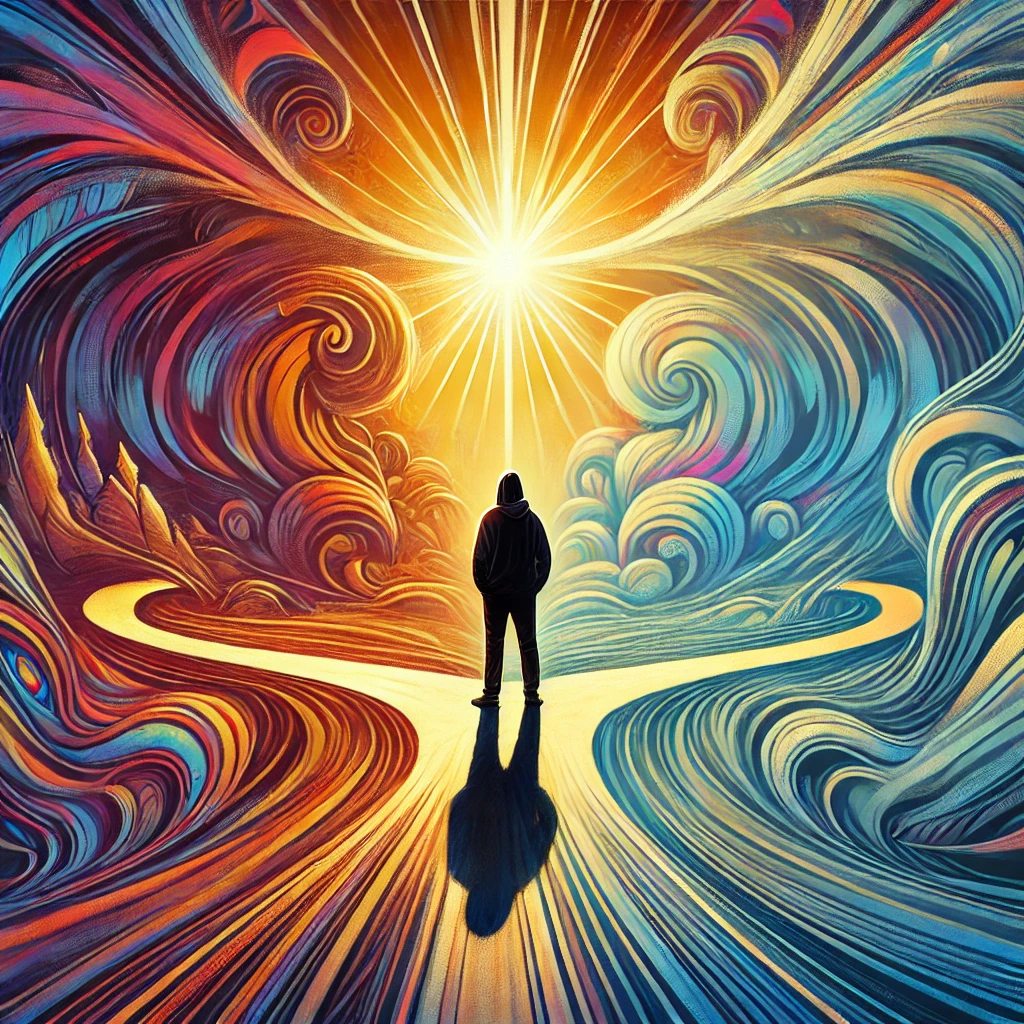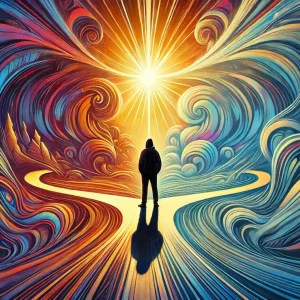 Growing up Catholic, I learned early on about sin, guilt, and penance. I remember sitting in church, watching candlelight flicker across the statues of saints, feeling awed by their holiness but convinced I could never be like them. I prayed, confessed, and tried to follow the rules, but deep down, there was always a part of me that felt irredeemably flawed, burdened with an inherent unworthiness I couldn’t shake.
Growing up Catholic, I learned early on about sin, guilt, and penance. I remember sitting in church, watching candlelight flicker across the statues of saints, feeling awed by their holiness but convinced I could never be like them. I prayed, confessed, and tried to follow the rules, but deep down, there was always a part of me that felt irredeemably flawed, burdened with an inherent unworthiness I couldn’t shake.
As I got older, those feelings of guilt and shame only deepened. I’d often act out in secret, torn between my faith and desires I couldn’t seem to control. My life felt divided—keeping the surface clean and presentable while beneath, my heart remained tangled in shame. It became a familiar cycle: indulge in hidden moments, then plunge into guilt, throwing myself into prayers and promises to be “better.” Yet, nothing ever seemed to lift that weight off my shoulders.
Eventually, I found Sex and Love Addicts Anonymous (SLAA), a space where people openly shared their struggles, their secrets, and their need for connection. At first, I thought I’d finally found the solution. I dedicated myself to the program, attended meetings, and did my best to honor my edges. But as the years went by, I still felt the gnawing belief that I was unworthy. Even with support, the shame remained like a shadow, reminding me that I could never fully escape it.
One day, I stumbled upon No Bad Parts by Richard Schwartz. The title alone stopped me. Was it possible that I wasn’t as broken as I’d thought? Could it be that my desires and fears, the parts I’d been taught to reject, weren’t “bad” at all but just misunderstood? This idea felt radical, almost blasphemous, to think that I could look at myself with compassion rather than condemnation.
The more I read, the more I began to wonder if there was a way to reach these hidden parts of myself and embrace them. I’d heard about using psychedelics for deep healing, and though it felt like forbidden ground, I felt a quiet pull—a sacred urge to seek healing in ways I hadn’t allowed myself to explore. I chose All Saints’ Day for my first ceremony. It felt fitting, a day dedicated to honoring those who had struggled and found grace, each saint with their own journey of redemption.
On the morning of All Saints’ Day, I entered the ceremony with a heart full of prayer. I thought of the saints, those who had struggled, sacrificed, and transformed. I wasn’t entering this lightly; I was stepping into it with intention, hoping to find relief from a lifetime of feeling broken.
As the experience unfolded, memories rose to the surface: the hidden moments I’d spent in shame, the secrets I’d buried, the prayers whispered in desperation. But rather than the usual rush of guilt, I felt something softer. Each memory, each hidden part of myself, seemed to have a voice, a reason, a story. For the first time, I could see these parts not as sinful or shameful but as young, wounded, and in need of love. I saw myself as I was in those moments, not through the lens of judgment, but with compassion.
It was as if the divine presence I’d been taught to revere was showing me that every part of me was worthy, that my shame and desires were part of a larger journey toward wholeness. The shame I’d carried for so long began to loosen, replaced by a sense of peace and understanding. I felt connected to something greater, a love that embraced every part of me, just as I was.
In the weeks and months that followed, I continued working with No Bad Parts, learning to connect with and understand each facet of myself with gentleness. I began to see my faith in a new light. Instead of focusing on sin and guilt, I saw my religion as a path toward compassion and healing. When I prayed, I felt as if I was speaking not just to God but to the parts of myself that had been in need of love.
And then, as if by divine timing, I discovered a community called Psychedelics in Recovery. It was a place where others were integrating spiritual practices with healing modalities like psychedelics, a space where I could openly share my experiences without fear of judgment. In this group, I found acceptance and understanding I hadn’t realized I needed. Here, I could be open about my journey, my faith, and the blend of both with my healing work. I didn’t have to choose between my faith and my desire for healing; I could embrace both as part of my spiritual path.
With Psychedelics in Recovery, I discovered that my spiritual journey didn’t have to fit within a single framework. Here was a group that honored the need for both faith and exploration, tradition and transformation. For the first time, I felt that I could be whole—embracing my Catholic roots, my recovery, and my evolving understanding of myself.
All Saints’ Day has become more than just a holy day for me; it is a reminder that we are all on a journey toward wholeness, that no part of us is beyond redemption. Psychedelics, No Bad Parts, and the Psychedelics in Recovery community have shown me that I, too, am worthy of love, acceptance, and healing, just as I am. In integrating my faith with new ways of understanding, I’ve found the spiritual peace I’d been seeking all along.




